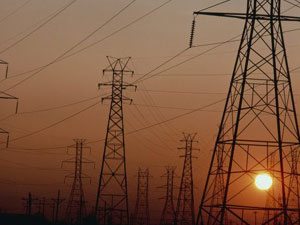
[miningmx.com] – PUBLIC Enterprises Minister Malusi Gigaba, whose biggest headache is Eskom, was in Soweto a fortnight ago.
He was asking people not to steal so much electricity because we’re running out of it. And also that they must please pay their bills for the electricity they get legally. It’s going to be a very difficult winter, Gigaba said, because we do not have enough electricity to keep everything going during all the cold days and nights.
Imagine you live in Soweto. You work. Including travelling time you are away from home between fourteen and sixteen hours a day.
Unfortunately you don’t earn enough to have one of the prepaid electricity meters installed in your four-room house in Soweto, as required by Eskom before it will supply power in Soweto. When you have something extra, you buy cheap electricity from one of the “syndicates’ that “draw’ power from one of the line cables or from an underground cable.
You read the story about the outcome of Sake24‘s case against Eskom and BHP Billiton, which has been kept secret for 20 years, but now reveals that Billiton buys 9% of Eskom’s power but provides only 2% of Eskom’s income for a product that contributes very little to job creation.
And now the minister asks you please not to steal the power … “to hell with you, minister.’
As far back as 1971 the Industrial Development Corporation (IDC) built the old Bayside smelter – which could initially only smelt about 80,000 tonnes of aluminium per year – mainly to make sure that South Africa has access to aluminium even if economic sanctions were applied against the country.
However, Bayside never made any money. In the early Nineties it was sold to companies in the Gencor group along with other assets owned by the state, but which did not belong there, especially not under a new future democratically elected government.
But Gencor didn’t really want it. At the same time, Eskom was stuck with a huge amount of surplus electricity – so much so that it considered closing two or three power stations.
There were quite special ties between Gencor and Eskom at the time, partly because Gencor was the government’s partner in the apartheid era to circumvent sanctions – including arms sanctions – and for adding value to mining production, especially base metals like chromium and manganese. The old Nationalist government only took the Anglo group into its confidence if it had no other option.
There was no electricity regulator – probably the main reason that Eskom was caught up in unilateral aluminium contracts.
The whole mess with the contract is Eskom’s fault, observers say. Actually Billiton should be patted on the shoulder for unlocking so much value for its shareholders, a leading economist says.
Really? Has he thought about this carefully?
Billiton says it has a legal contract with Eskom for the supply of electricity for its two smelters, which use up 9% of the country’s total electricity and 5.68% of our basic generating capacity.
Billiton will probably argue before Nersa that the 22,54 cents per kilowatt hour that it will pay according to its formula for electricity at Hillside this month still covers the cost of generation, the “marginal cost’.
By this it means the cost including the building of power stations before Eskom started with the construction of Medupi, Kusile and Ingula, the emergency hydroelectric power station in the Drakensberg. The cost of these projects, according Billiton’s probable arguments, cannot be included in the price that its smelters use.
One of the last power stations that Eskom built before Medupi was Majuba near Amersfoort and Standerton.
Right next to Majuba would have been a colliery. The mine belonged to Rand Coal, a division of the then Rand Mines. Eskom also granted Rand Mines a contract for the supply of Majuba’s coal – 14 million tonnes per year. That’s before Majuba was built.
When Majuba came into operation in the late Eighties and needed coal, Rand Mines, which had then become Ingwe Coal, realised that Majuba Colliery’s coal seam was a fractured ore body and also full methane gas, which made it life threatening and impossible to mine.
So there the Majuba power station stood, not much smaller than Medupi, in the veld without any coal – nevertheless a legal contract for the supply of coal, but without any coal.
And Ingwe Coal? Well, today it’s part of…. that very same BHP Billiton.
The building of Majuba was complete, but it only became fully operational when South Africa experienced electricity problems in 2006 and 2007. Coal was transported there from everywhere – 14 million tonnes per year of it. This was done with 30-tonne trucks. That’s 1,300 loads per day.
And that’s why the roads in and around towns like Hendrina, Volksrust and other places became battle fields for these rural communities. Many people have died because of the conditions of these roads.
That’s why, after many years of struggling, Eskom finally obtained all the servitudes and in November of last year started constructing a 47km railway line to Majuba. The construction cost alone is just under R8bn. Repairs to the roads (for Eskom’s account) have also cost a few billion rand.
All because a company whose assets and liabilities are today in the Billiton group failed to do the exploration work that it was contractually obliged to do.
Postscript: Eskom released Ingwe Coal from its obligations for the Majuba Colliery in 2002.











